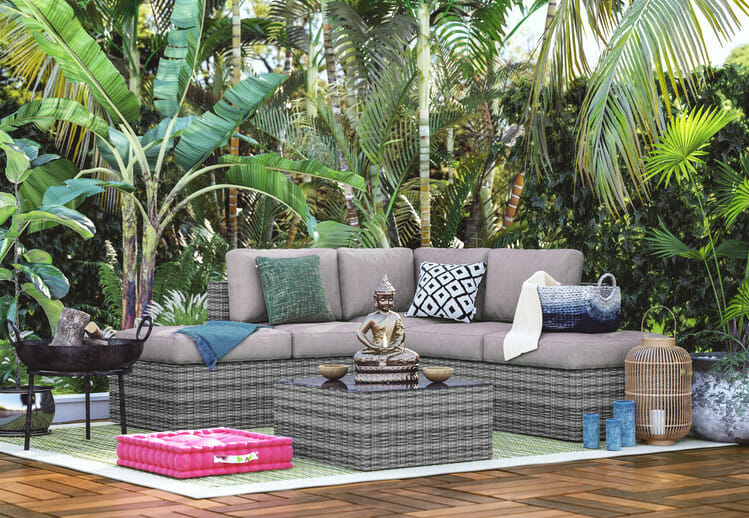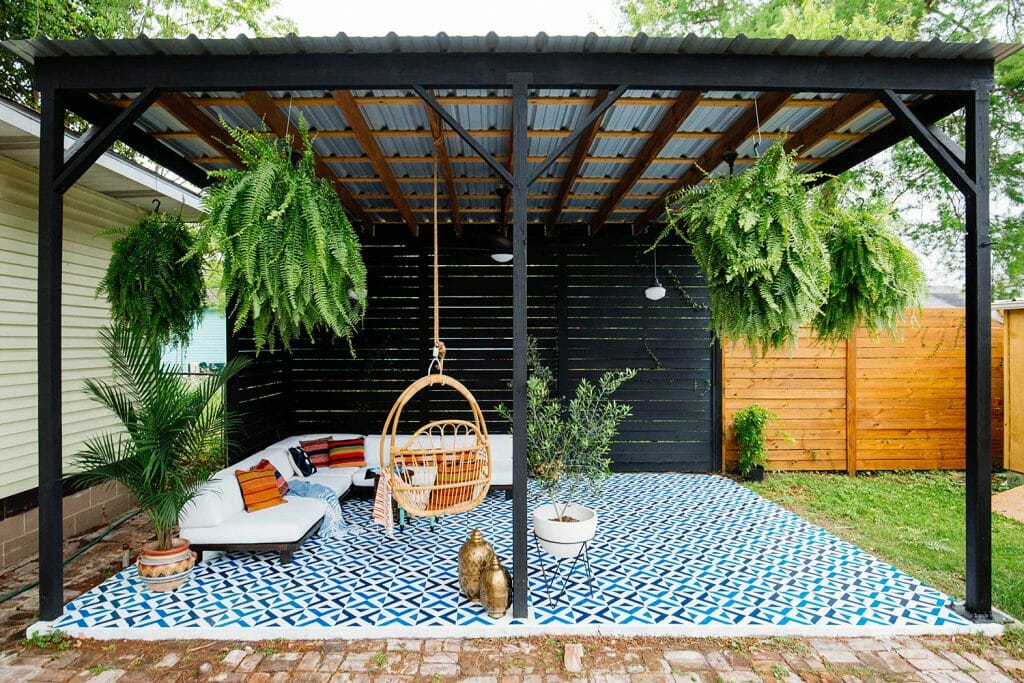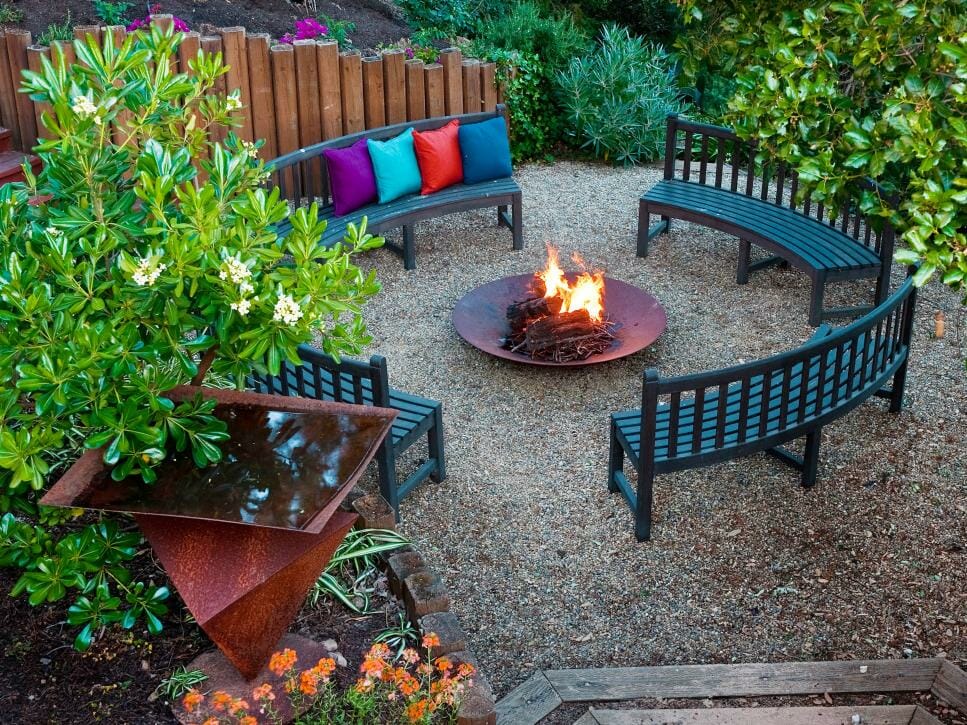Outdoor Design Essentials for a Holistic Lifestyle: Creating Harmony in Outdoor Spaces
Embark on a journey into the world of outdoor design essentials for a holistic lifestyle. From sustainable practices to biophilic elements, discover how these aspects come together to create a balanced and harmonious outdoor environment.
Delve into the realm of outdoor living spaces, sustainable design, biophilic elements, outdoor furniture, lighting, cooking areas, garden design, and natural features that enhance your overall well-being.
Outdoor Living Spaces
Outdoor living spaces refer to areas outside of the home that are designed for relaxation, entertainment, and connection with nature. These spaces can include patios, decks, gardens, and outdoor kitchens, among others.
Essential Elements for Creating a Functional Outdoor Living Space
Creating a functional outdoor living space involves incorporating key elements that enhance both the aesthetic appeal and usability of the area. Some essential elements include:
- Comfortable seating options such as outdoor sofas, chairs, and dining sets
- Shade structures like umbrellas, pergolas, or awnings to provide relief from the sun
- Outdoor lighting for ambiance and visibility during evening gatherings
- Greenery and landscaping to add a natural touch and create a serene atmosphere
- Outdoor cooking facilities like grills or outdoor kitchens for al fresco dining experiences
Contribution of Outdoor Living Spaces to a Holistic Lifestyle
Outdoor living spaces play a significant role in promoting a holistic lifestyle by encouraging individuals to spend more time outdoors, connect with nature, and engage in activities that support overall well-being. These spaces provide opportunities for relaxation, socialization, and physical activity, which are essential components of a balanced and healthy lifestyle.
Sustainable Outdoor Design

Creating outdoor spaces that are sustainable is essential for minimizing environmental impact and promoting a healthier lifestyle.
Eco-Friendly Materials and Practices
Using eco-friendly materials and practices in outdoor design can significantly reduce the carbon footprint and overall environmental impact of a space.
- Recycled materials: Incorporating materials like recycled plastic, reclaimed wood, or recycled glass can help reduce waste and promote sustainability.
- Natural materials: Opting for natural materials such as bamboo, cork, or stone can minimize the use of harmful chemicals and promote a healthier outdoor environment.
- Native plants: Choosing native plants for landscaping can help conserve water, reduce the need for pesticides, and support local biodiversity.
- Solar-powered lighting: Using solar-powered lighting fixtures can reduce energy consumption and lower electricity bills while also utilizing a renewable energy source.
Benefits of Sustainability in Outdoor Spaces
Incorporating sustainable elements into outdoor spaces not only benefits the environment but also enhances the overall quality of life for individuals.
- Improved air quality: Using eco-friendly materials and practices can help reduce air pollution and create a healthier outdoor environment for relaxation and recreation.
- Cost savings: Sustainable outdoor design features like rainwater harvesting systems or energy-efficient appliances can lead to long-term cost savings on utility bills.
- Enhanced well-being: Being surrounded by natural and sustainable elements in outdoor spaces can promote mental well-being, reduce stress, and increase overall happiness.
- Long-term sustainability: By designing outdoor spaces with sustainability in mind, we contribute to the long-term health and well-being of the planet for future generations.
Biophilic Design
Biophilic design is an innovative approach that incorporates elements of nature into the design of outdoor spaces. By bringing the outdoors in, biophilic design aims to create a harmonious environment that promotes well-being and connectivity with nature.
This design philosophy recognizes the innate human desire to connect with nature and the positive impact it can have on our physical and mental health. By incorporating natural elements such as plants, water features, natural materials, and ample natural light, biophilic design seeks to enhance the overall experience of outdoor spaces.
Examples of Biophilic Design Elements in Outdoor Settings
- Living green walls that incorporate lush vegetation into vertical structures
- Water features like ponds, fountains, or streams that mimic natural water sources
- Natural materials such as wood, stone, and bamboo for a more organic feel
- Abundant plantings of native species to attract wildlife and create a sense of biodiversity
How Biophilic Design Enhances Overall Well-being in a Holistic Lifestyle
Biophilic design has been linked to numerous benefits for human health and well-being. Studies have shown that exposure to nature and natural elements can reduce stress, improve cognitive function, and enhance mood. By creating outdoor spaces that incorporate biophilic design principles, individuals can experience a greater sense of relaxation, rejuvenation, and connection to the natural world.
Outdoor Furniture and Decor
When creating a holistic outdoor living space, it's essential to consider the furniture and decor that will not only enhance the aesthetics but also provide functionality and comfort.
Essential Outdoor Furniture Pieces
Outdoor furniture plays a crucial role in setting up a comfortable and inviting outdoor space. Here are some essential pieces to consider:
- Outdoor dining set for al fresco meals and gatherings
- Comfortable seating options such as lounge chairs or sofas
- Umbrellas or shade structures to protect from the sun
- Outdoor rugs and cushions to add warmth and color
Role of Decor in Creating a Serene Outdoor Environment
Decor elements can transform your outdoor space into a tranquil oasis. They help create a cohesive look and add personality to the area. Some decor ideas include:
- Hanging string lights or lanterns for ambiance
- Potted plants and flowers to bring in nature
- Outdoor artwork or sculptures for visual interest
Tips for Selecting Durable Outdoor Furniture
Choosing durable and weather-resistant outdoor furniture is crucial for longevity and minimal maintenance. Consider the following tips when selecting outdoor furniture:
- Opt for materials like teak, aluminum, or synthetic wicker that are known for their durability
- Look for furniture with UV-resistant finishes to prevent fading from sun exposure
- Ensure that the furniture is easy to clean and maintain for convenience
- Invest in furniture covers to protect them during harsh weather conditions
Outdoor Lighting

Outdoor lighting plays a crucial role in enhancing the overall design and functionality of outdoor spaces. It not only provides illumination but also creates ambiance and highlights key features of the landscape.
Types of Outdoor Lighting
- 1. Pathway Lights: These lights are typically installed along walkways, driveways, or garden paths to guide and ensure safety.
- 2. Floodlights: Ideal for illuminating large areas, such as a backyard or garden, these lights provide bright and wide coverage.
- 3. String Lights: Perfect for creating a cozy and inviting atmosphere, string lights can be hung across outdoor seating areas or trees.
- 4. Wall Lights: Mounted on walls or fences, these lights add a decorative element while providing necessary lighting.
- 5. Solar Lights: Environmentally friendly and cost-effective, solar lights harness sunlight to power up and illuminate outdoor spaces.
Enhancing Outdoor Ambiance with Lighting
Well-planned outdoor lighting can transform the mood and ambiance of outdoor spaces, making them more inviting and functional, especially during evening gatherings or events. By strategically placing different types of lights, such as pathway lights to guide guests, string lights to create a warm glow, and wall lights to highlight architectural features, you can enhance the overall appeal of your outdoor living area.
Outdoor Cooking and Dining Areas
Outdoor cooking and dining areas are essential components of a holistic outdoor living space. These spaces offer the perfect opportunity to enjoy meals in the fresh air, surrounded by nature, and create lasting memories with family and friends.
Design Considerations for Outdoor Kitchens and Dining Areas
When designing outdoor kitchens and dining areas, it is important to consider factors such as the layout, functionality, and materials used. The layout should be conducive to easy movement between cooking and dining areas, while the functionality should cater to your cooking needs.
Additionally, choosing durable and weather-resistant materials is crucial for longevity and easy maintenance.
Ideas for Creating Functional and Inviting Outdoor Cooking Spaces
- Include a built-in grill or outdoor pizza oven for cooking versatility.
- Integrate ample countertop space for food preparation and serving.
- Install a sink and storage cabinets for convenience.
- Create a comfortable seating area for guests to relax while food is being prepared.
Social and Health Benefits of Outdoor Dining Experiences
- Outdoor dining experiences encourage social interaction and bonding among family and friends.
- Exposure to natural light and fresh air can boost mood and overall well-being.
- Enjoying meals outdoors can lead to a more relaxed dining experience and promote mindful eating.
Garden and Landscape Design

When it comes to holistic outdoor design, gardens and landscapes play a crucial role in creating a harmonious and soothing environment. Incorporating greenery into outdoor spaces not only enhances the aesthetic appeal but also contributes to the overall well-being of individuals.
Incorporating Greenery into Outdoor Spaces
Integrating plants, trees, and flowers into your outdoor design can bring a sense of tranquility and connection to nature. Here are some tips for incorporating greenery into your outdoor spaces:
- Choose a variety of plants with different shapes, sizes, and colors to create visual interest.
- Consider the local climate and sunlight conditions when selecting plants to ensure they thrive in their environment.
- Utilize planters, hanging baskets, and vertical gardens to maximize space and add greenery to small outdoor areas.
- Create a focal point with a statement tree or a flower bed to enhance the overall design of your garden.
Benefits of Maintaining a Garden in Outdoor Areas
Maintaining a garden in outdoor areas not only adds beauty to your surroundings but also provides numerous mental and physical health benefits:
- Stress Relief:Gardening has been shown to reduce stress levels and promote relaxation, creating a calming retreat in your outdoor space.
- Physical Exercise:Tending to a garden involves physical activity like digging, planting, and watering, which can contribute to a healthy lifestyle.
- Fresh Air and Oxygen:Plants release oxygen during photosynthesis, improving air quality and creating a refreshing atmosphere in your outdoor area.
- Connection to Nature:Spending time in a garden allows you to connect with the natural world, fostering a sense of well-being and mindfulness.
Water Features and Natural Elements
Water features and natural elements play a crucial role in enhancing outdoor design by creating a harmonious and tranquil environment. They bring a sense of relaxation and connection to nature, making outdoor spaces more inviting and rejuvenating.
Water Features for Relaxation
- Water fountains: The sound of flowing water can have a calming effect on the mind, reducing stress and promoting relaxation.
- Koi ponds: Watching colorful fish swim gracefully in a pond can be a meditative experience, creating a sense of tranquility.
- Waterfalls: The sight and sound of water cascading down rocks can create a soothing ambiance, helping to unwind and de-stress.
Natural Elements for Calmness
- Rock gardens: Incorporating rocks and stones into the landscape design can add a grounding element, promoting a sense of stability and serenity.
- Wooden structures: Using natural wood for furniture or decor can bring warmth and organic beauty to outdoor spaces, creating a cozy and inviting atmosphere.
- Plants and greenery: Adding lush green plants and flowers can purify the air, reduce noise, and evoke a sense of peace and tranquility in the outdoor environment.
Last Recap
In conclusion, the integration of these outdoor design essentials not only elevates the aesthetic appeal of your outdoor spaces but also nurtures a sense of tranquility and connection with nature. By incorporating these elements, you can truly embrace a holistic lifestyle that rejuvenates both body and soul.
FAQ Section
How do outdoor living spaces contribute to a holistic lifestyle?
Outdoor living spaces provide a connection to nature, promoting relaxation, stress reduction, and overall well-being.
What are some eco-friendly materials for outdoor design?
Materials like reclaimed wood, recycled plastic, and bamboo are excellent choices for sustainable outdoor design.
How does biophilic design enhance well-being?
Biophilic design incorporates natural elements, reducing stress, enhancing creativity, and improving cognitive function.
What are essential outdoor furniture pieces for a holistic setup?
Key pieces include comfortable seating, dining tables, lounge chairs, and versatile storage solutions.
Why is outdoor lighting important in design?
Outdoor lighting not only enhances the aesthetic appeal but also improves safety and functionality of outdoor spaces.